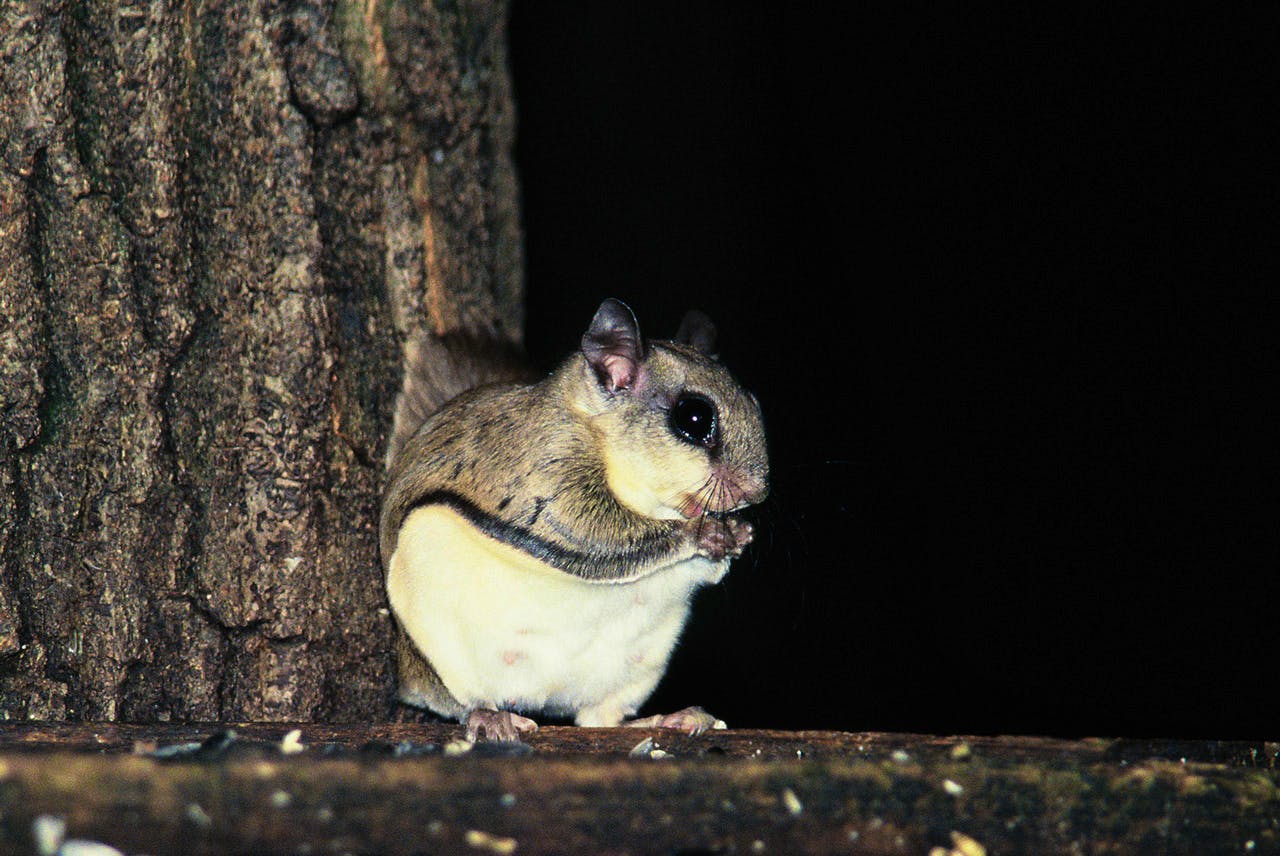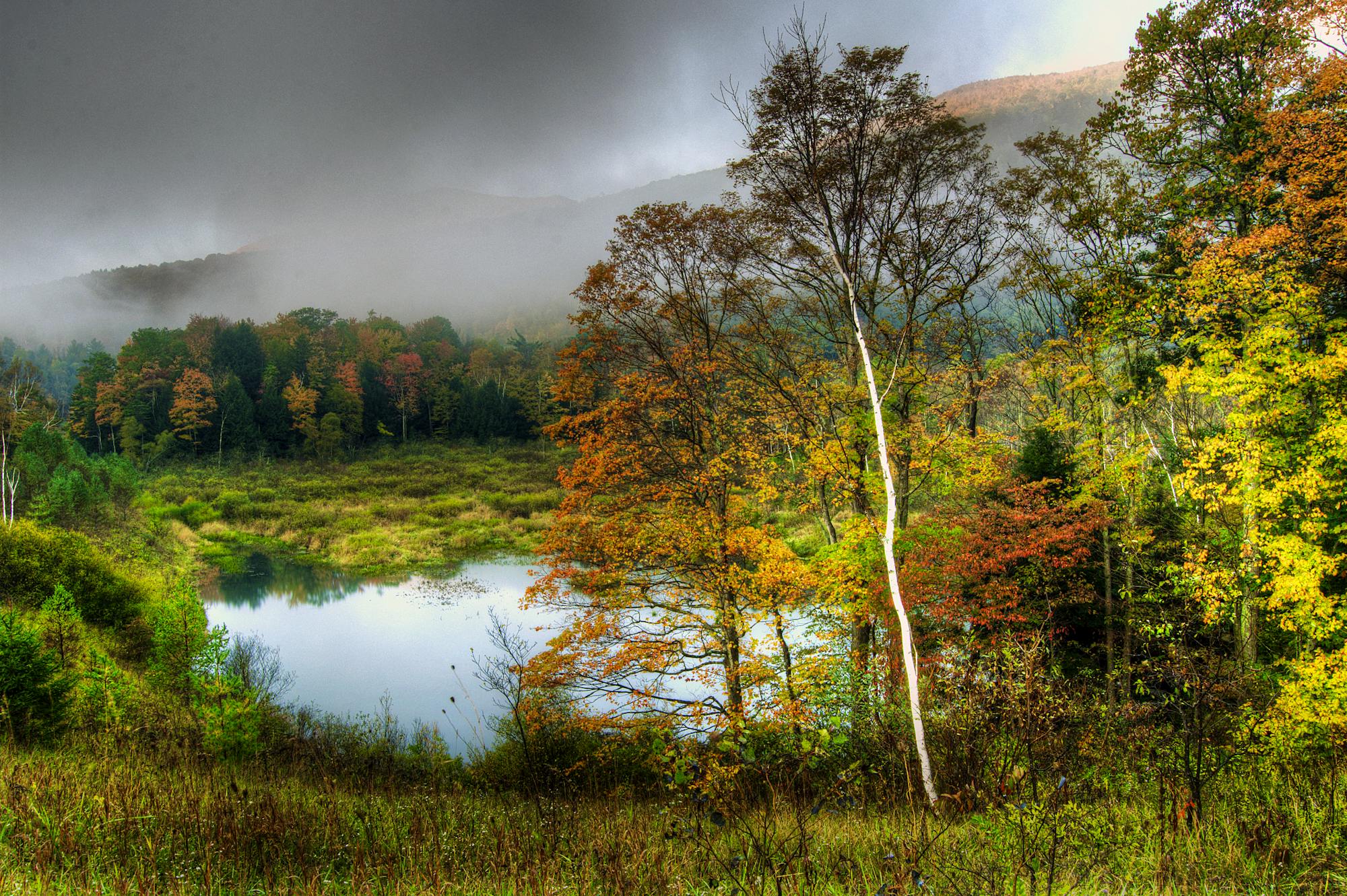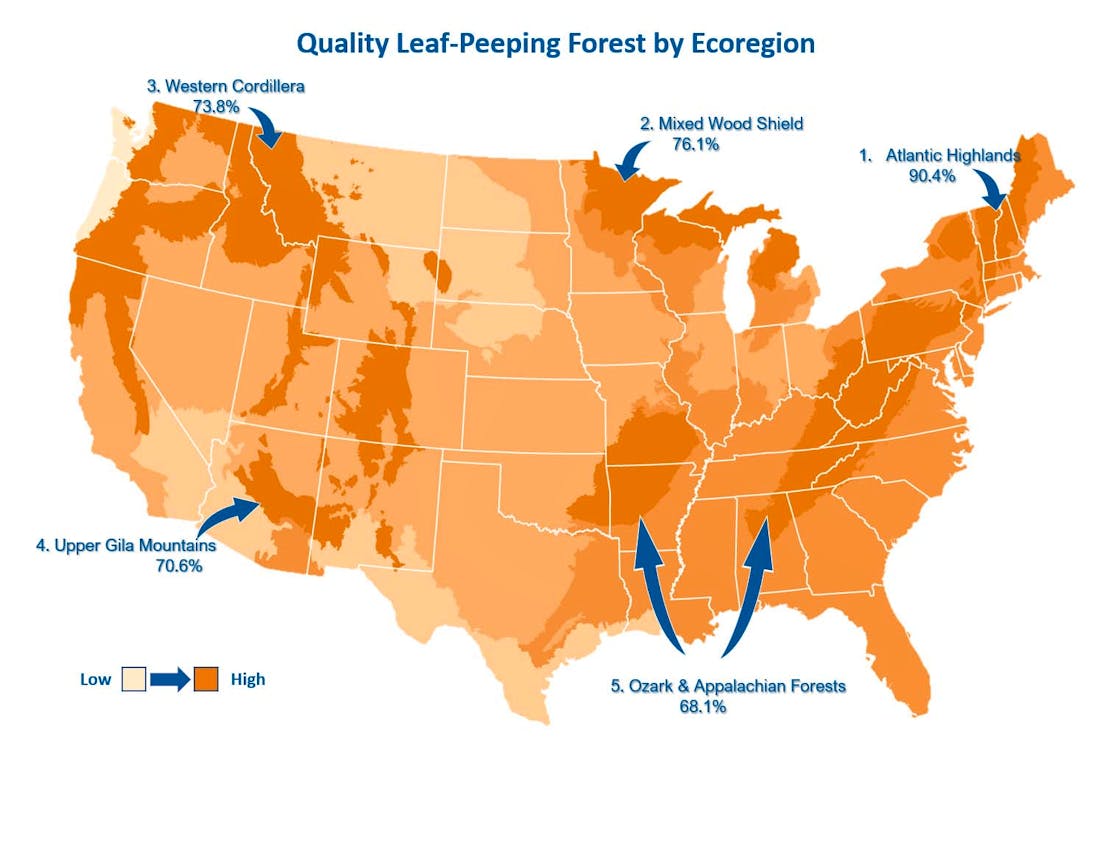Around this time of year, people across the country take to the forests to appreciate nature and observe the awesome display of colors that come over the leaves before trees become bare (and we bundle up!) for the winter. Whether it’s the yellow hues of aspen stands in the Rockies or the bright red sugar maples that stand out in New England ‘s hardwood forests, leaf-peepers are out in force as autumn comes alive. We also depend on forests for our survival, from the air we breathe to the wood we use, and forests sustain a diverse set of wildlife species. Unfortunately, human encroachment means the loss of forests, and therefore loss of habitats for species like Canada lynx, migratory birds, flying squirrels, bats, riparian species and more. In the Center for Conservation Innovation at Defenders, we sift through data to better understand our landscapes and inform wildlife conservation. Deciduous forests contain multitudes of layers to uncover to understand the full picture of a forest in fall – changing colors and wildlife preparing for winter are both intertwined with degrading habitat and changing climate.





The Colors
The compounds that cause the reds, oranges, yellows, and browns are always present in the leaves, but finally get to shine when chlorophyll – the key component of photosynthesis and the reason leaves appear green during the summer – production slows to a halt. The timing and intensity of the big show will depend on several things, including temperature and water availability. Shorter days and cooler temperatures signal key parts of plants to stop chlorophyll production. In warmer years, the peak of fall foliage can be delayed and drought – as many in the East are noticing this year – can cause stress in the trees that either speeds up the process or mutes the color palate for the season. Many tourism groups use this information to help predict when and where the peak foliage viewing will occur so that you can plan your trip just right. Of course, this is hard to do without the proper data, but you can contribute as a citizen scientist to track seasonal changes in both plants and animals by joining Nature’s Notebook.
The colors that are displayed strongly depend on the tree species that occur in the forest. Forest species data from the U.S. Department of Agriculture can help us map what colors may be highlighted in regions around the country.
The Wildlife
Forests are an important part of our natural landscapes that can be appreciated all year round as they provide food, shelter, and refuge to wildlife. The same forests that we seek out for a colorful escape are home to foxes, deer, coyotes, bats, hawks, bears, woodpeckers and many migratory birds living among the trees. Many of these species also enjoy the fall. Deer, squirrels, opossums, raccoons, and many bird species depend on the acorn harvest that comes this time of year to fuel up for the winter. Other smaller species like the leaf-footed bug depend on fallen leaves for camouflage and refugia. Many threatened and endangered species like gray wolves that depend on deciduous forests need these habitat patches to remain large and connected to support movement and growth of populations.



The Changes
The top ecoregions for leaf peeping include the iconic Atlantic Highlands in New England and the Adirondacks where 90% of the ecoregion is covered in deciduous forests. This is followed by the upper Midwest (76.1%) and the Western Cordillera (73.8%).
However, our forests are changing – and I don’t just mean the colors. Sprawling human populations increase the number of roads and developments cutting into parts of our natural landscapes that many species depend on. This also cuts down on the amount of area for our nationwide displays of fall foliage. Defenders’ CCI team tracks land use changes with satellite imagery, especially in habitats where we are worried about already-imperiled species. The most recent data released from the National Land Cover Database, which is maintained by the U.S. Geological Survey, shows that many of our forested habitat areas are no longer forest at all (in black below). The map of ecoregions will high deciduous forest lost may look familiar: the Mixed Wood Shield of the upper Midwest and the Ozark and Appalachian forests are also in the top five when it comes to deciduous forest lost since 1985 and the iconic leaf peeping forests of the Atlantic Highlands aren’t far behind. Other ecoregions like Mediterranean California, the Southeastern Plains, and the Sierra Madre Piedmont may not have been areas renowned for their fall foliage, but they have lost a significant amount of what deciduous forest they did contain. This can disproportionately impact wildlife like the gray bat that depend on declining forest habitats.


And those are just the areas with the highest loss. Forest land all over the country, including prime leaf-peeping spots, are being logged, converted to agriculture, and encroached upon by development.
Defenders of Forests
Defenders created the Forests for Wildlife Initiative to advance wildlife conservation in forest planning. We are actively engaged in forest plan revisions on national forests across the country and served on the 2012 Planning Rule Advisory Committee. To guide forest managers and the public through the 2012 Planning Rule’s new process for addressing climate change adaptation on national forests, Defenders of Wildlife produced a “Planning for Climate Change” report, in which we illustrate the adaptation measures found in the rule. We worked with Congress to enact a new Farm Bill in 2018 with a forestry title that protects science-based management and wildlife that depend on forest habitat on private lands. We are working with state and local agencies to protect state parks like Rocky Fork State Park in Tennessee that are important habitat for wildlife. We are also defenders of the Roadless Rule – a nationwide rule to protect large tracts of relatively undisturbed public forestland from road construction and destructive timber harvest. We continue the fight to protect our forests, for future generations to view amazing fall foliage and for the survival of our equally amazing wildlife.








